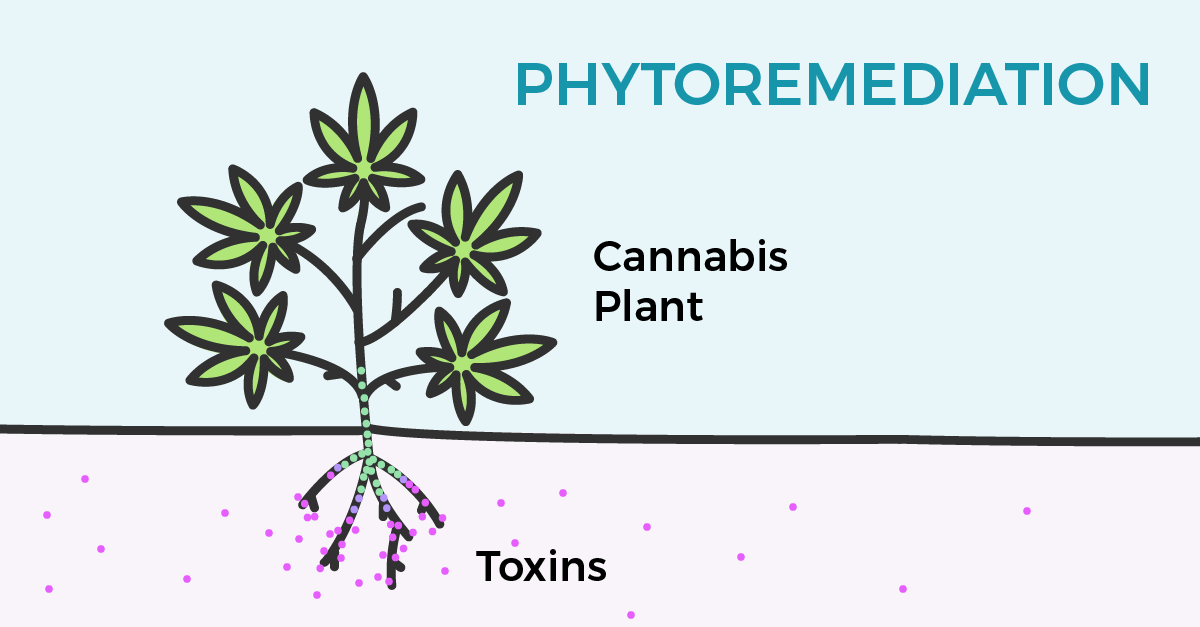Growing cannabis has merit beyond selling or smoking it. Merely cultivating the herb can rejuvenate its natural environment.
That’s what some farmers in Taranto, Italy, discovered when they planted cannabis to decontaminate their soil.
Vincenzo Fornaro’s family farm had become contaminated with dioxin, nickel, lead, and other substances nearly a decade ago. Europe’s largest steel plant nearby Fornaro’s farm had been spitting toxic chemicals toward his property. The more than 600 sheep who lived on the farm, which produced ricotta and meat for generations, were slaughtered by the Italian government once it became clear they were toxic.
To clean up the soil, Fornaro turned to cannabis — and in particular, hemp, which contains only trace amounts of THC, the main psychoactive compound in cannabis. By definition in the United States, hemp contains less than .03 percent THC, while marijuana contains above that amount. Both hemp and marijuana, however, fall under the umbrella of the cannabis plant.
The process by which hemp detoxifies the soil is called phytoremediation, during which plant’s roots absorb surrounding contaminants.
In Fornaro’s case hemp was instrumental in drawing out heavy metals from the soil.

When using cannabis for phytoremediation, it’s important to use industrial hemp rather than varieties grown for human consumption, says Jesse Dodd, better known by his creative entity Biovortex, an artistic concept rooted in regenerative, scientific solutions for ecodynamic gardening, permaculture, and environmental consciousness. “You’re not going to grow a bunch of nice {cannabis} flowers for consumption in toxic soil,” he says. “But with hemp, you’re getting more fibers out of it. It’s a crop you can use for paper or ropes or different products.”
One study by the Polish Institute of Natural Fibers found that certain varieties of hemp were resilient to heavy metals in soil, without any consequences on the plant’s growth, yield, or fiber quality. Another study, published in the Agronomy Journal, however, showed that in psychoactive strains of cannabis, the biotoxins absorbed by the plant could have an effect on its cannabinoid (chemical compound) profile. (For the record, that’s why it’s important to make sure that if you use CBD oil — a non-psychotropic cannabis product derived from the compound cannabidiol — it’s derived not from industrial hemp but from cannabis grown for human ingestion in healthy soil.)
It’s been over two years now since Fornaro began cultivating hemp with guidance from Claudio Natile, founder of the hemp startup CanaPuglia. Natile says hemp goes far back in Italian tradition.
For centuries, hemp had been a major crop in Italy. By the 1950s, Italy was the world’s second-largest producer of hemp after the Soviet Union. Italian hemp was often used for clothing, but as synthetic fibers became more popular, the hemp industry began to shrink.
Today in Italy, it’s legal to cultivate hemp, so long as farmers notify law enforcement that they’re using it for industrial use and that it contains only small amounts of THC.
Of course, Fornaro wasn’t the first to use hemp to detoxify his soil. Hemp plants were used for phytoremediation after the Chernobyl accident, while some have even considered using it for Fukushima. In the United States alone, it’s estimated that more than 30,000 sites could benefit from hemp remediation. However, American legal restrictions on hemp cultivation bar farmers from growing it, unless they’re among the small handful who have government-issued research licenses.
Nonetheless, hemp is regarded among agricultural experts as a valuable “dynamic accumulator,” says Dodd. “It brings up different minerals in gardening, pulls them up and stores them in the leaves,” he explains. “It’s a useful way of bringing minerals that the plant needs for different functions, which are digested by biology. Plant roots working with soil biology are able to break down elements in the soil and make them bioavailable, which aids in functions and chemical processes in the plant.” And it aids humans once they ingest it.
So if the cannabis is grown in healthy soil, which includes insects, other plants, and fungi, it will absorb nutrients that can be healthy for the consumer — but of course, in toxic soil, it’s best not to consume any cannabis that was grown for the sake of clean up.
For those who practice permaculture — creating sustainable, self-sufficient ecosystems — cannabis can also be grown in conjunction with other crops. “Ideally the first thing you want to think about is what biome you’re in, what plants are native to your region, and how you can benefit the natural biology of that area,” says Dodd. “Have wild flowers attract pollinators to the area, and if you’re putting out seed, cover crops like standard nitrogen fixers like legumes can be helpful to build more fertile soil because they pull N2 {nitrogen} from the air.” Crops like that grow nicely in conjunction with cannabis, requiring less fertilization, while the cannabis acts as a bioaccumulator.
Cannabis is so useful because it builds diverse biological relationships through its roots, Dodd explains. “It’s a fast growing annual {crop}, with lots of fibers,” he says. “It’s mostly that relationship, that speed and being able to store in multiple different areas.”
When cannabis is grown in “living soil” (with a living microbiology, including fungi, bacteria, works, etc.), the herb increases nutrient and water retention, while reducing the amount of irrigation and fertilization required to sustain a crop through harvest, according to Dodd. “As cannabis continues to move towards becoming legal big business it becomes increasingly important for small farmers to adapt to the changing climate,” he says. “If we build regenerative cannabis farms that are immensely profitable, the rest of agriculture and business will have to take note.”





